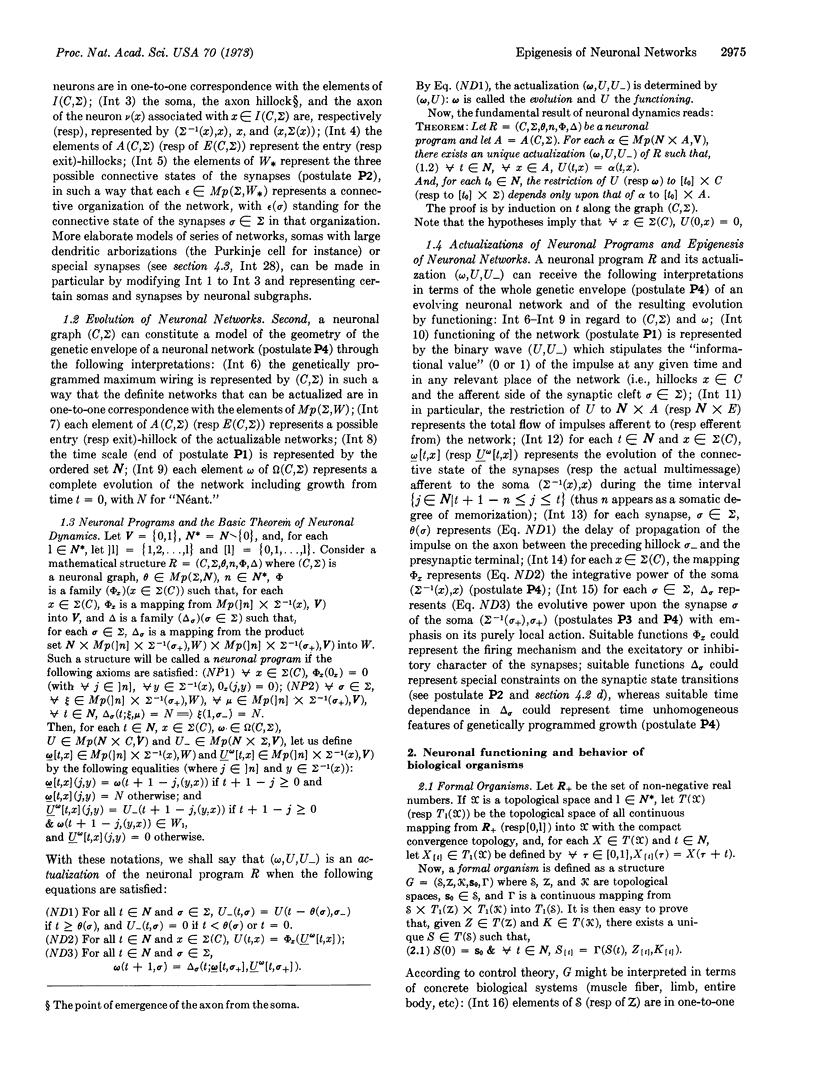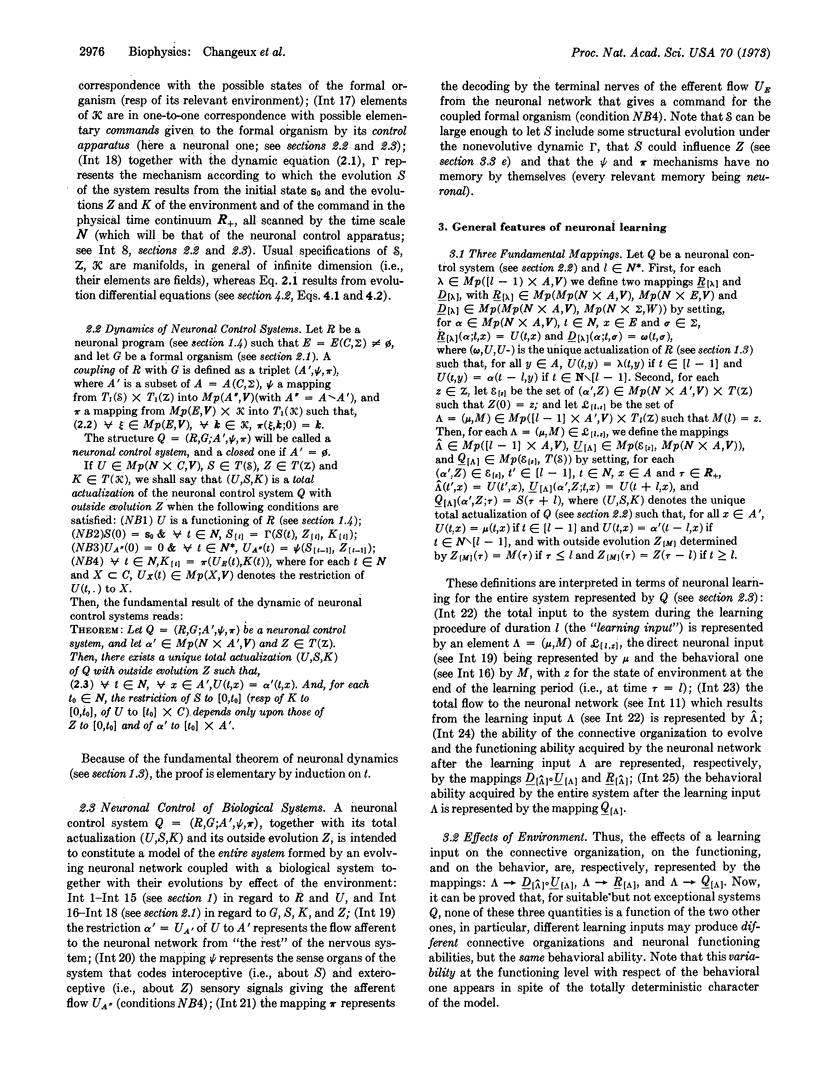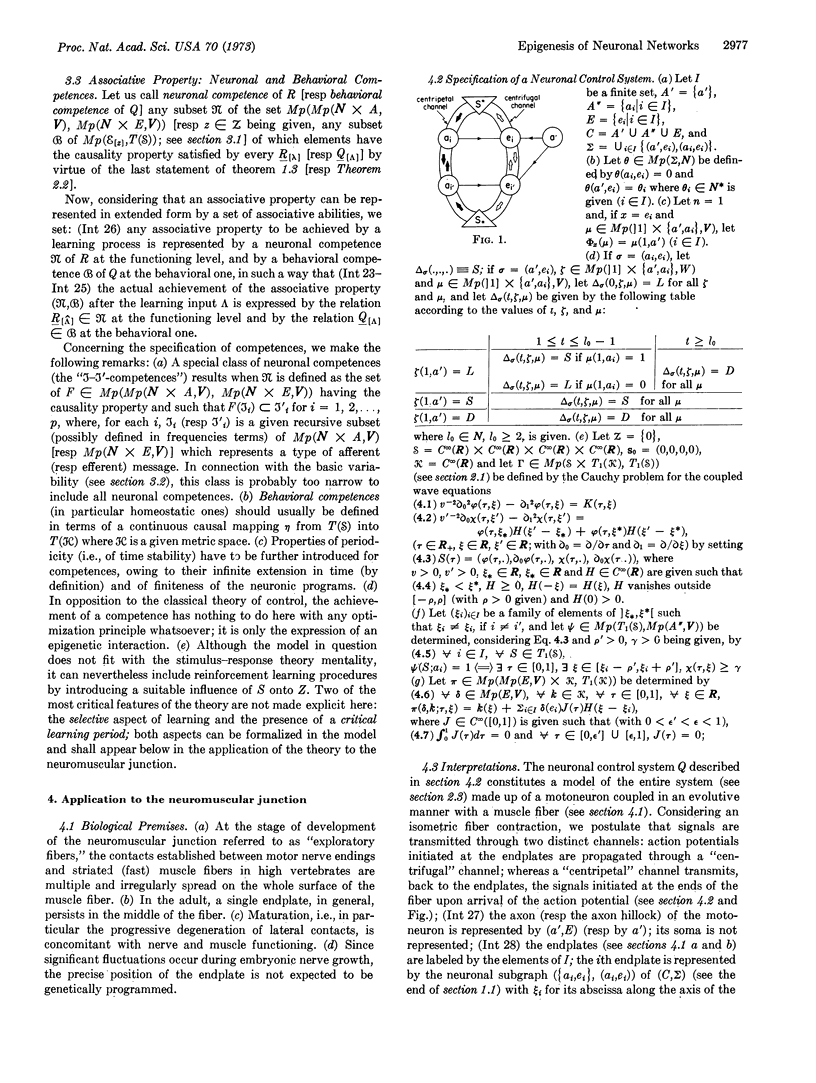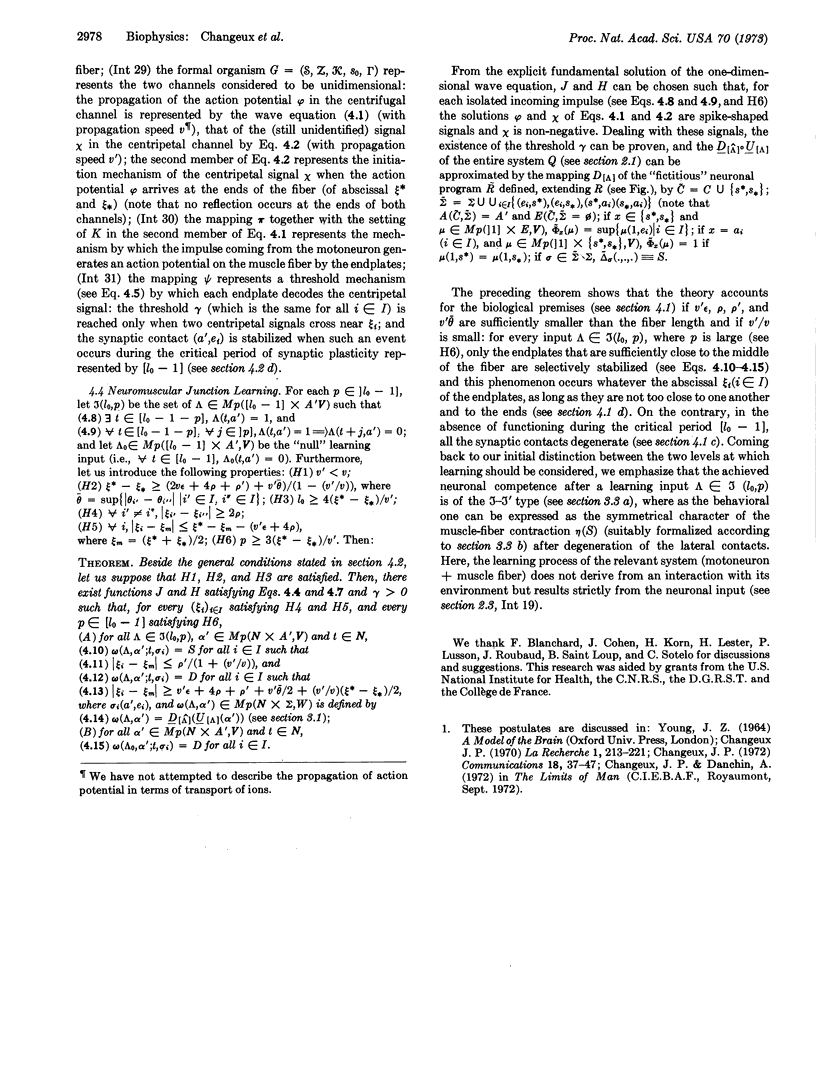Abstract
A formalism is introduced to represent the connective organization of an evolving neuronal network and the effects of environment on this organization by stabilization or degeneration of labile synapses associated with functioning. Learning, or the acquisition of an associative property, is related to a characteristic variability of the connective organization: the interaction of the environment with the genetic program is printed as a particular pattern of such organization through neuronal functioning. An application of the theory to the development of the neuromuscular junction is proposed and the basic selective aspect of learning emphasized.
Keywords: control theory, graph theory, learning, synaptic plasticity, neuromuscular junction
Full text
PDF







